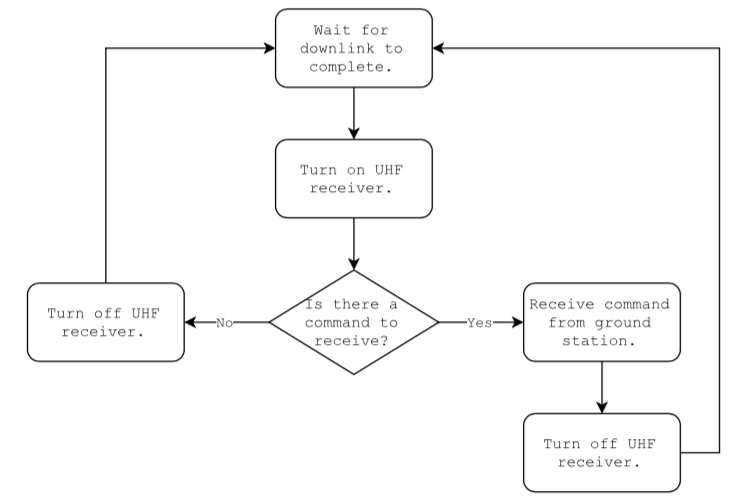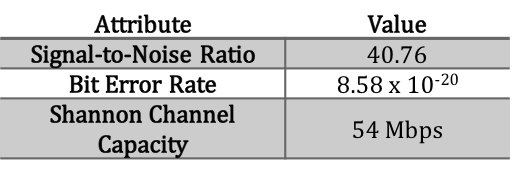Uplink Overview
The UHF uplink from our ground stations to our satellites occurs at the end of every 10-minute downlink session. The diagram below explains the flow of this process.
After downlinking is complete, the onboard computer system enables power to the UHF receiver. If a command is waiting at the ground station to be transmitted to the satellite, the ground station will be actively transmitting a notice of the pending command. If the satellite receives such a notice, the satellite acknowledges the request via the X-band communication system, receives the command, and disables power to the UHF receiver. If no such notice is received, the satellite has no pending command, so power to the UHF receiver is immediately disabled. This system uses as little power as possible by keeping the UHF receiver powered off at all times until it is needed.
Link Budget
The necessary formulas for calculating losses are described in detail on the Satellite Downlink page. Because we are being conservative in calculating our link budgets by choosing worst-case values, the same noise values that applied to the downlink channel also apply to the uplink channel.
The following parameters differ between the downlink and uplink:
Due to the UHF transmitter being an option of the ground station antennas, we chose the following parameters:
The tables below shows applicable uplink gains and losses.
The following parameters differ between the downlink and uplink:
- Center Frequency: 435 MHz
- Wavelength: 0.6897 m
- Bandwidth: 10 MHz
Due to the UHF transmitter being an option of the ground station antennas, we chose the following parameters:
- Gain: 5 dB
- Transmit Power: 2 W
The tables below shows applicable uplink gains and losses.
From the values above, the following channel attributes are determined:
The Shannon channel capacity represents the maximum theoretical bandwidth for our given uplink configuration. In practice, nowhere near this rate is achieved using UHF. The fact that the maximum theoretical rate is so high, however, assures us that we have enough headroom to transmit commands to our satellites quickly and efficiently.




